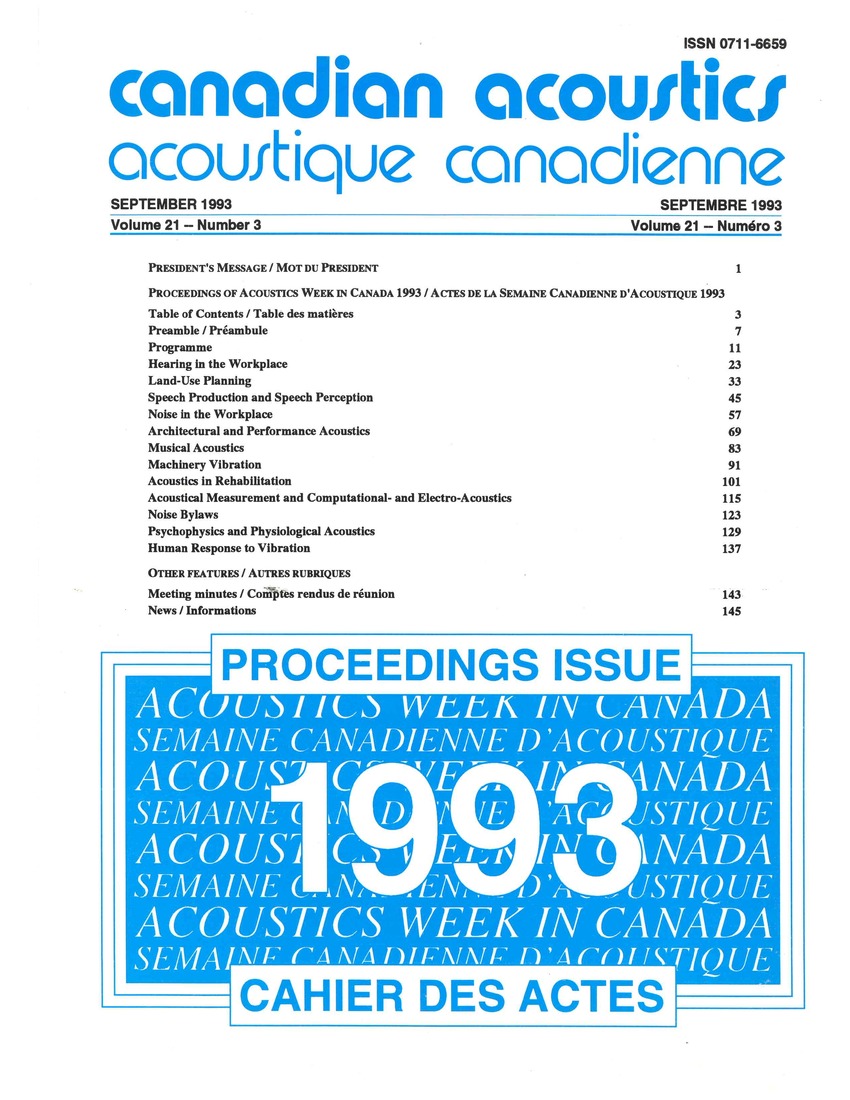Training of the English /r/ and /l/ speech contrasts in Korean listeners
Keywords:
hearing, speech intelligibility, English, speech contrasts, Korean listeners, rhotic flap, alveolar ridge, postvocalically, phonemic contrast, native Korean speakers, perceptual skillAbstract
Native speakers of Korean have particular difficulty with the distinction between English /r/ and /l/ contrasts (e.g., Borden, Gerber & Milsark, 1983). While English has two separate labels for the sounds we call /r/ and /l/, the Korean language groups both such sounds into a single category. The Korean /r/ tends only to occur intervocalically and it occurs in the form of a rhotic flap which is articulated with the tip of the tongue making a quick flipping contact against the alveolar ridge (Pyun, 1987). The Korean /l/ sound occurs only postvocalically, and only in a `light' form (Borden, et al., 1983). Korean orthography does not distinguish these sounds (i.e., these sounds do not constitute a phonemic contrast; Borden, et al., 1983). The Korean listener may therefore be unable to hear the difference between the English /r/ and /l/ sounds. In the present study we sought (1) to measure the abilities of young, adult, native Korean speakers to discriminate between the English /r/ and /l/ speech contrasts; and (2) to evaluate the possibilities that these listeners could be taught this perceptual skill using procedures similar to those used by Logan, Lively and Pisoni (1991)Additional Files
Published
How to Cite
Issue
Section
License
Author Licensing Addendum
This Licensing Addendum ("Addendum") is entered into between the undersigned Author(s) and Canadian Acoustics journal published by the Canadian Acoustical Association (hereinafter referred to as the "Publisher"). The Author(s) and the Publisher agree as follows:
-
Retained Rights: The Author(s) retain(s) the following rights:
- The right to reproduce, distribute, and publicly display the Work on the Author's personal website or the website of the Author's institution.
- The right to use the Work in the Author's teaching activities and presentations.
- The right to include the Work in a compilation for the Author's personal use, not for sale.
-
Grant of License: The Author(s) grant(s) to the Publisher a worldwide exclusive license to publish, reproduce, distribute, and display the Work in Canadian Acoustics and any other formats and media deemed appropriate by the Publisher.
-
Attribution: The Publisher agrees to include proper attribution to the Author(s) in all publications and reproductions of the Work.
-
No Conflict: This Addendum is intended to be in harmony with, and not in conflict with, the terms and conditions of the original agreement entered into between the Author(s) and the Publisher.
-
Copyright Clause: Copyright on articles is held by the Author(s). The corresponding Author has the right to grant on behalf of all Authors and does grant on behalf of all Authors, a worldwide exclusive license to the Publisher and its licensees in perpetuity, in all forms, formats, and media (whether known now or created in the future), including but not limited to the rights to publish, reproduce, distribute, display, store, translate, create adaptations, reprints, include within collections, and create summaries, extracts, and/or abstracts of the Contribution.


